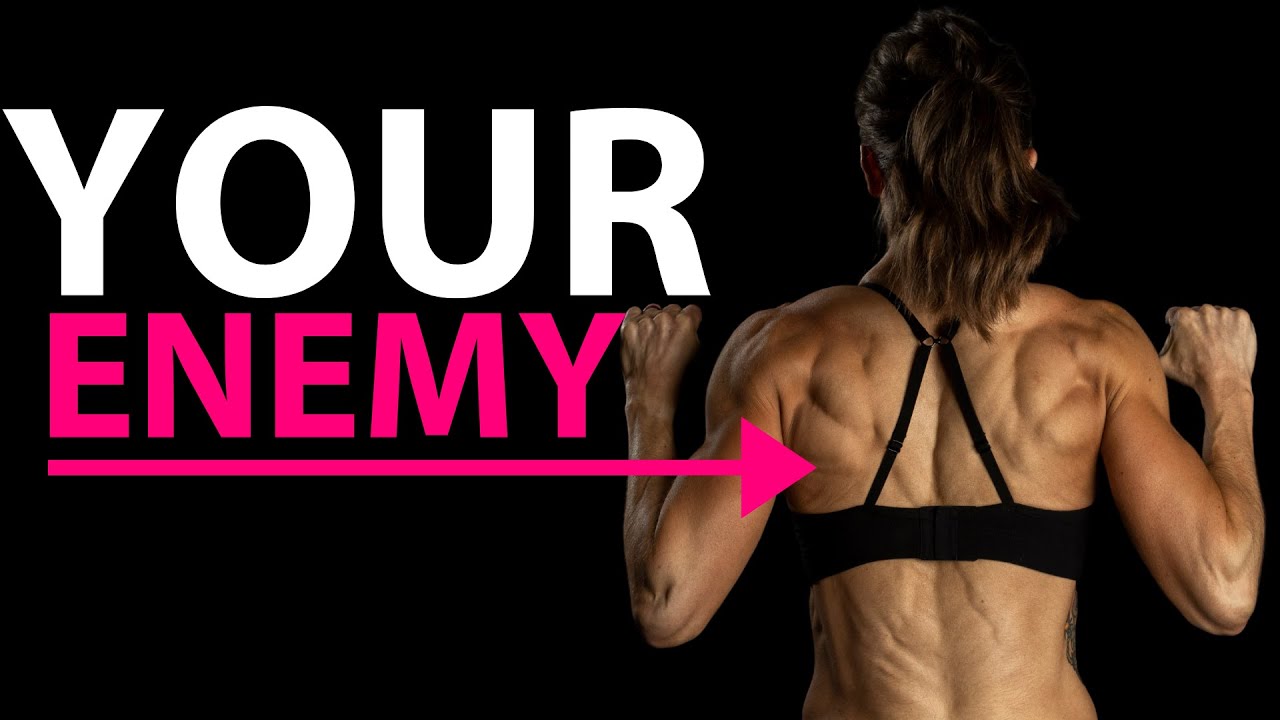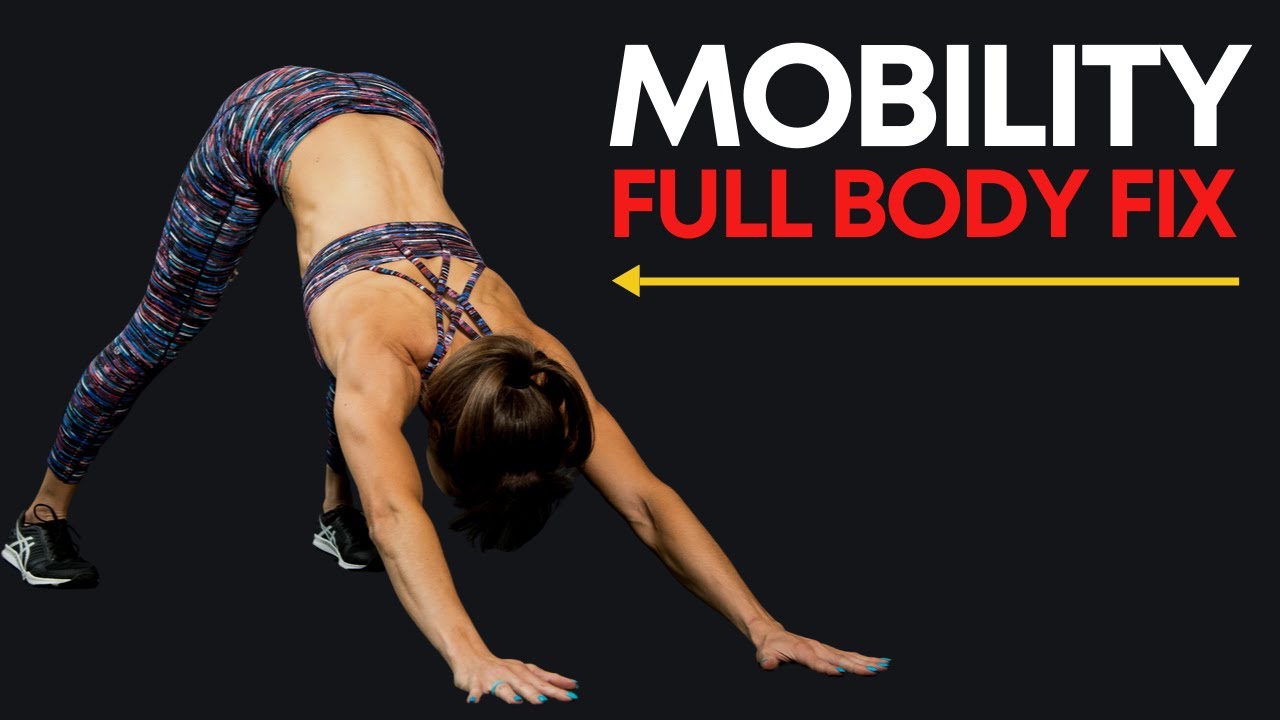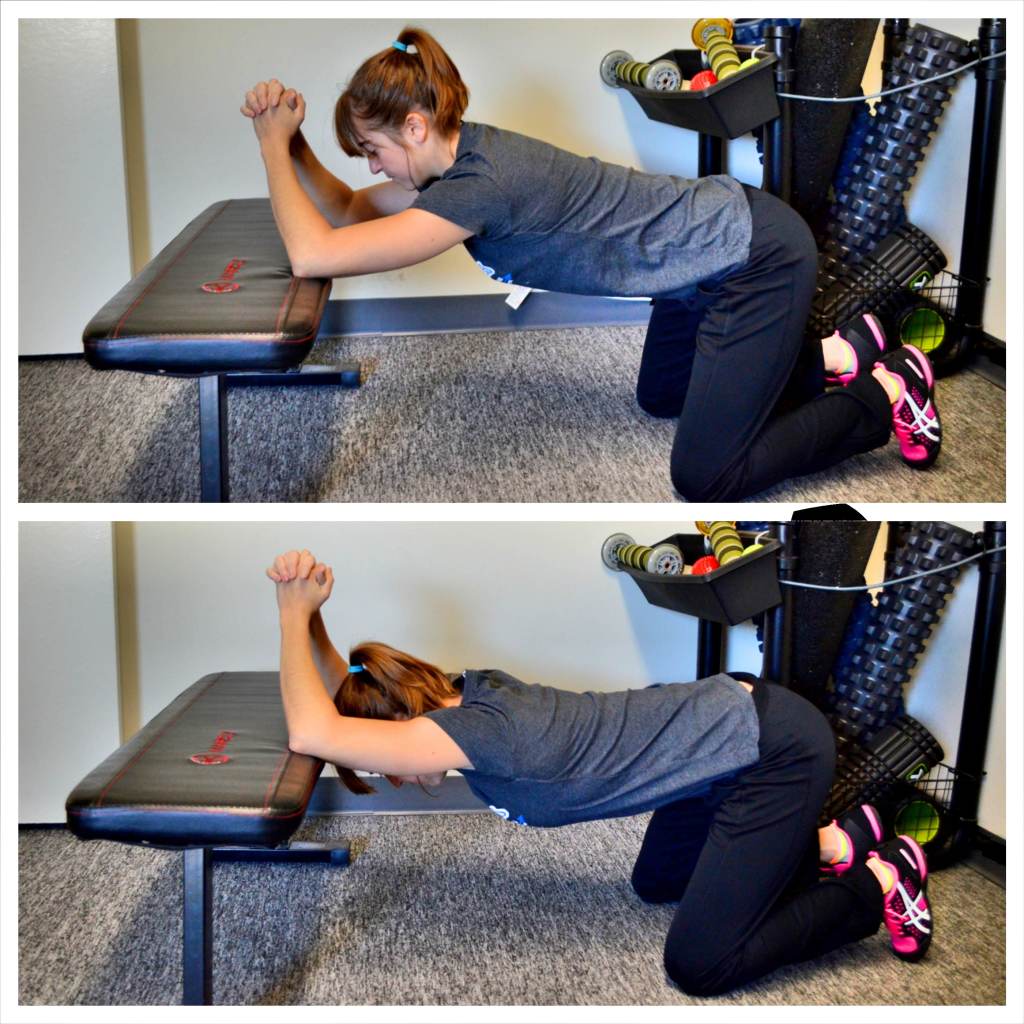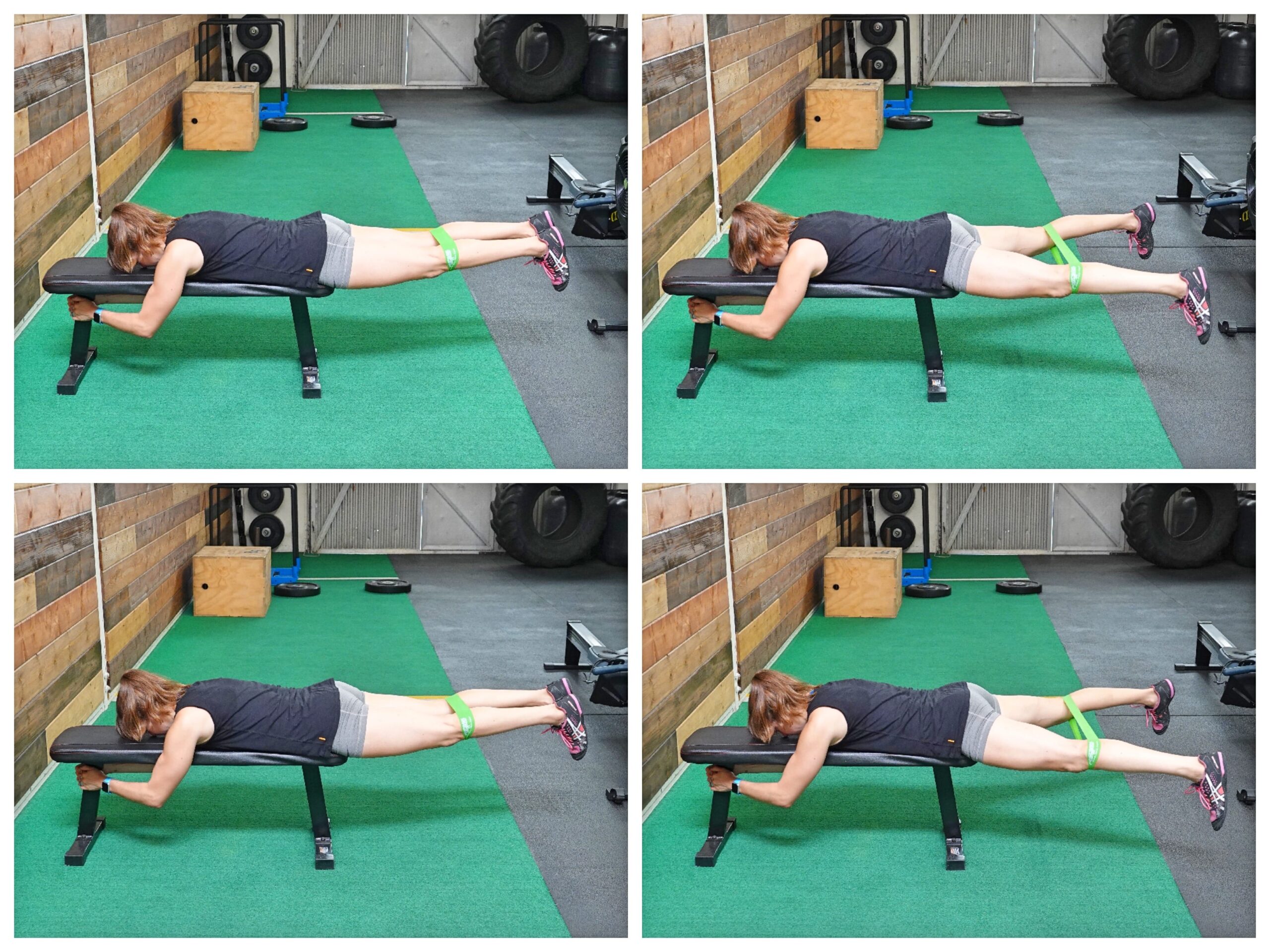Before I dive into the key areas we want to work on, I do just want to highlight the importance of doing MORE than stretching when it comes to improving your mobility.
Part of becoming more mobile isn’t simply improving the flexibility of the muscles that act on a joint. It’s also about improving the stability of that joint.
Often if muscles are underactive or weak, they will not support the joint properly and that may then lead to overload of other muscles. This can then create mobility restrictions because the joint isn’t stable and muscles aren’t able to work together properly.
This overload can lead to tightness and a lack of mobility as the body tries to protect itself from further issues and injury.
This is also why your elbow can end up injured because of a lack of proper shoulder mobility or stability. We compensate and seek out mobility and stability from other areas.
It’s why, when addressing these 3 key areas of immobility and instability, we want to take a 3-step prehab approach of foam rolling, stretching and activation.
This way we can relax overactive and shortened muscles, mobilize joints and improve the stability of these areas so the correct muscles are pulling their weight!
For each of these 3 areas, I want to share a key foam rolling, stretching and activation move to help you start working on your mobility and stability!
3 Key Areas Of Immobility And Instability:
#1: Scapular Mobility And Stability
Elbow, neck, shoulder or even upper back aches and pains? You need to make sure you have proper scapular control and mobility!
So often we get focused on only improving our shoulder mobility and we forget how much the shoulders and shoulder blades really work together to power movements. We ignore our shoulder blades and the impact their proper movement can have on protecting and stabilizing our shoulders.
From moves like pull ups to push ups, we need to have proper scapular control if we want to use the correct muscles to power the movements and prevent overload of smaller muscles like our rotator cuff.
To improve your scapular mobility and control, try including these 3 moves before your upper body workouts. It will help improve your pressing as well as your pulling!
The first move you want to include in that prehab or warm up process is Levator Scapulae Foam Rolling.
The levator scapulae contributes to a few different scapular movements from elevating your shoulder blade to downwardly rotating the scapula to even performing anterior tipping.
This muscle becoming tight can be a key culprit of neck and shoulder aches and pains!
A great way to start relaxing it to alleviate aches and pains and start to restore proper scapular functioning is by using a ball to relax and release the muscle.
Find that top middle point of your shoulder blade by your spine and either lie on a ball with it right above that edge of the shoulder blade or stand pressing back into a ball against the wall there.
Hold on the spot even slightly looking away as you press into the ball. Breathe and relax as you hold.
The second move you want to include is a stretch to open up your chest as well as even mobilize your shoulders and shoulder blades.
The Suspension Trainer Snow Angel is a great move to include especially before your workout.
While we often feel like our upper back becomes tight from sitting hunched over, we can’t ignore that this posture puts our pec muscles in a perpetually shortened state. A tight pec minor can contribute to anterior tipping of the shoulder blade while a tight pec major can contribute to that internal shoulder rotation.
This can lead to neck, upper back, shoulder and even elbow aches and pains.
Especially if you want to improve your overhead press, this is a great move to include.
When you do the Suspension Trainer Snow Angels, you want to make sure you’re engaging your upper back to open your chest up as you raise your arms up overhead.
You want to extend your thoracic spine too.
By focusing on engaging your back to drive your chest open, you make sure you actually stretch your pecs instead of just seeking out more range of motion from your shoulders.
Feel your shoulder blades move as you raise your arms overhead and then lower them back down to your sides.
The third move you will want to include is an activation exercise – the Serratus Anterior Press.
Serratus anterior weakness has been linked to neck, shoulder and even upper back aches and pains as it is a primary scapular stabilizer. (STUDY: https://pubmed.ncbi.nlm.nih.gov/21889362/ )
If you’re experiencing scapular winging or upper body dysfunction, strengthening the serratus anterior is key as it will help posteriorly tip the shoulder blade as well as help you perform proper upward rotation of the shoulder blade.
Both of these movements are key to keeping your neck and shoulders healthy during overhead pressing (not to mention this may even help prevent overload at your elbows and even lumbar spine!)
With the Serratus Anterior Press, it is key you feel yourself pulling your shoulder blade forward around your ribs as you reach out. You aren’t just doing a unilateral chest press. You want to focus on the movement being felt around your ribs as you protract your shoulder blade or pull it away from your spine.
You want to also punch slightly up at an incline as you feel like you’re almost reaching out at the end. Focus on what you feel working over trying to simply go heavier.
#2: Hip Mobility And Stability
Lower back, hip or knee pain? Groin strains? Hamstring pulls? You need to work on your hip mobility and stability.
We’ve all been told we are spending too much time seated.
But this constant hip flexion is creating mobility restrictions at our lumbo-pelvic-hip complex that has far reaching effects. It’s not only why we can feel our lower back taking over during deadlifts by also even why we can fear knee pain from lunging!
That’s why it’s key we start by relaxing those overactive and shortened hip flexor muscles.
The first move you want to include is Rectus Femoris Foam Rolling.
This quad muscle is so key to release and lengthen because it not only flexes the hip but also extends the knee.
The direct impact it has on both joints can contribute to hip and knee pain not to mention even perpetuate quad dominance and anterior pelvic tilt, leading to lower back issues and even hamstring strains. This muscle may even impact your SI joint health and functioning because it can contribute to rotation of the pelvis.
To roll this muscle, you can use a roller or ball. The smaller and harder the trigger point tool, the more it will dig in.
Find the middle of your thigh about half way down and lie over the foam roller or ball. You can even flex and relax your quad to help the muscle relax and release.
The second move you want to include is the Side Lunge to Crescent.
Your adductors, or inner thighs, not only adduct or bring your legs together, they’re also hip flexors and hip internal rotators.
The only exception to this is the posterior fibers of the adductor magnus, which can contribute to hip external rotation and hip extension. This muscle can become overworked especially if our glutes are weak!
And all too often the adductors become tight and overworked just like your other hip flexor muscles.
Your adductors becoming overworked can potentially contribute to anterior pelvic tilt and lower back aches and pains not to mention groin strains, hip pain and even knee pain.
Specifically the gracilis can have an impact on your knee and even your lower leg!
That’s why this dynamic stretch is the perfect way to warm up your legs while working to improve your hip mobility.
Make sure that as you do the side lunge portion you aren’t turning your toes in or out. You want them to be parallel to really stretch out your adductors. Keep one leg straight as you hinge at the hips to load that other glute. Watch that your knee, ankle and hip are all in line. Also make sure your heels are down.
When you shift to the other side, pause before turning into the crescent lunge. When you come up in the crescent, focus on that front knee being in line with your hip and ankle and your back glute engaging to extend that back hip.
You want to be conscious to use your glutes to drive that hip extension and not just arch your back as you come up in the lunge.
The third move you want to include to activate your glutes and improve your hip stability is Side Shift Skaters.
All too often our glutes are underactive and not properly stabilizing our pelvis or hips. This can lead to lower back, hip, knee and even ankle and foot aches and pain. It can even create dysfunction up your trunk that can impact your shoulders.
It’s why it’s key we include glute activation moves in our routines to improve that hip stability. And it’s even better when we can include unilateral moves to correct imbalances while also working on our balance.
With Side Shift Skaters, you’re going to work on activating not only your glute max to improve hip extension, but also your glute medius to improve your hip stability and prevent unwanted movement in that frontal plane (or your pelvis shifting out to the side as you balance).
Strengthening your glute medius can not only improve glute max functioning but it can also help you improve your running gait and help you avoid knee injuries and issues from improper lunging or squatting patterns.
With this move, focus on crossing the leg behind as you hinge at the hips to push your butt back.
You want to pop the hip to the side so that as you stand up you not only extend your hip using your glute, but also then push the pelvis level using that glute medius.
While you want to be focused on working your glutes in this move, don’t ignore your foot’s connection to the ground. Think about driving the ground away as you come to balance on one leg to even create better activation up your entire leg!
#3: Ankle Mobility And Stability
Plantar Fasciitis. Ankle sprains. These issues are all too common.
Yet all too often we simply rest these injuries then jump back into what we were doing.
We never address WHY we had the problems in the first place OR even work to prevent future problems from the injuries themselves.
Injuries interrupt our natural recruitment patterns and can create mobility restrictions. We can’t ignore them!
It’s why prehab work to work on ankle mobility and stability is so key. Your feet are your foundation. Issues there can lead to compensations up your entire kinetic chain!
If you want to squat lower and have a more efficient running gait? You need to pay attention to your feet and ankles!
The first move you want to include is Peroneal Foam Rolling.
Tightness of this muscle can lead to what looks like a leg length discrepancy or even a weight shift during squatting, which can result in not only ankle issues but also knee, hip and lower back pain.
That’s why it’s key you start your mobility routine by relaxing this often shortened and overactive muscle, even focusing potentially on just one side.
A ball works best for this move although you can use a roller. You will want to press the outside of your lower leg down into the ball and hold as you even circle your foot. Don’t roll quickly but move the ball down the outside of your lower leg to target different trigger points, holding when you find one.
The second move to include is a great stretch to improve both the mobility of your feet but also your ankles – the Bear Squat to Foot Stretch.
Improving your dorsiflexion and big toe extension is more important than you think. It’s not only key to your foot and ankle health, but it can impact your gait and full hip and knee range of motion.
So often when our prehab work isn’t adding up for other areas, it’s because the culprit is actually at our foundation.
That’s why the Bear Squat to Foot Stretch is such a key move to include in your warm up routine. When you sit back on your feet, you want to extend your toes. Only sit back as far as you can while relaxing into the stretch. You can rock slightly side to side before putting your hands down on the ground to drive your heels down.
This isn’t about creating a pretty downward dog as you lift your butt up to drive your heels down.
Your hands will be in closer so you can focus on that ankle mobility. When you drive your heels down you’re working on your ankle dorsiflexion or the ability to bring your foot closer to your shin. You can pedal your feet then sit back and repeat the foot stretch.
The third move to include is a move to activate your calf but by working it through an increased range of motion.
If we don’t strengthen through the range of motion we are trying to create, we won’t maintain that new found ROM.
That’s why Plate Weight Eccentric Calf Raises are a great move to include.
Eccentric focused calf raises have been shown to be great for helping with achilles tendon issues not to mention heel pain and plantar fasciitis. And this can have a far reaching impact because studies have shown that Achilles tedinopathy may impact glute activation. (STUDY: https://europepmc.org/article/MED/24121244)
And by performing this move through a bigger range of motion than off the ground, you’ll help to really strengthen and maintain that mobility you’ve worked hard to build with the rolling and stretching. You’ll be strong through that full range of dorsiflexion to plantar flexion.
With this move make sure you don’t rock in or out on your feet.
Pause at the bottom as well to release tension and not use momentum. And make sure to very slowly lower down to spend more time under tension.
If you don’t have a plate weight, you can do it off a step or box even. If you even have an imbalance, you can do this as a unilateral variation instead too.
SUMMARY:
Whether you need to address mobility and stability issues in all 3 areas, or even simply one, you can combine the foam rolling, stretching and activation moves into a quick prehab or warm up routine.
Spending just 30-45 seconds per move, or per side, you can use all of these to get in an amazing head to toe mobility routine that’s under 11 minutes!
Want help improving your posture, getting rid of aches and pains and dialing in your overall routine to achieve freaking amazing and sustainable results?!
Uhm heck yes! OF COURSE!
I mean? Honestly? WHO DOESN’T!?
If you need help dialing in your prehab, workouts and nutrition so they all work together in one comprehensive plan?
Check out my online one on one coaching program!
I’m a corrective exercise NERD and I want to help you move and feel your best!
(I’m also a control freak so I love getting to tweak things and hold you accountability daily while actually TEACHING you what you need to attain LASTING results.)
–> Online One On One Coaching









